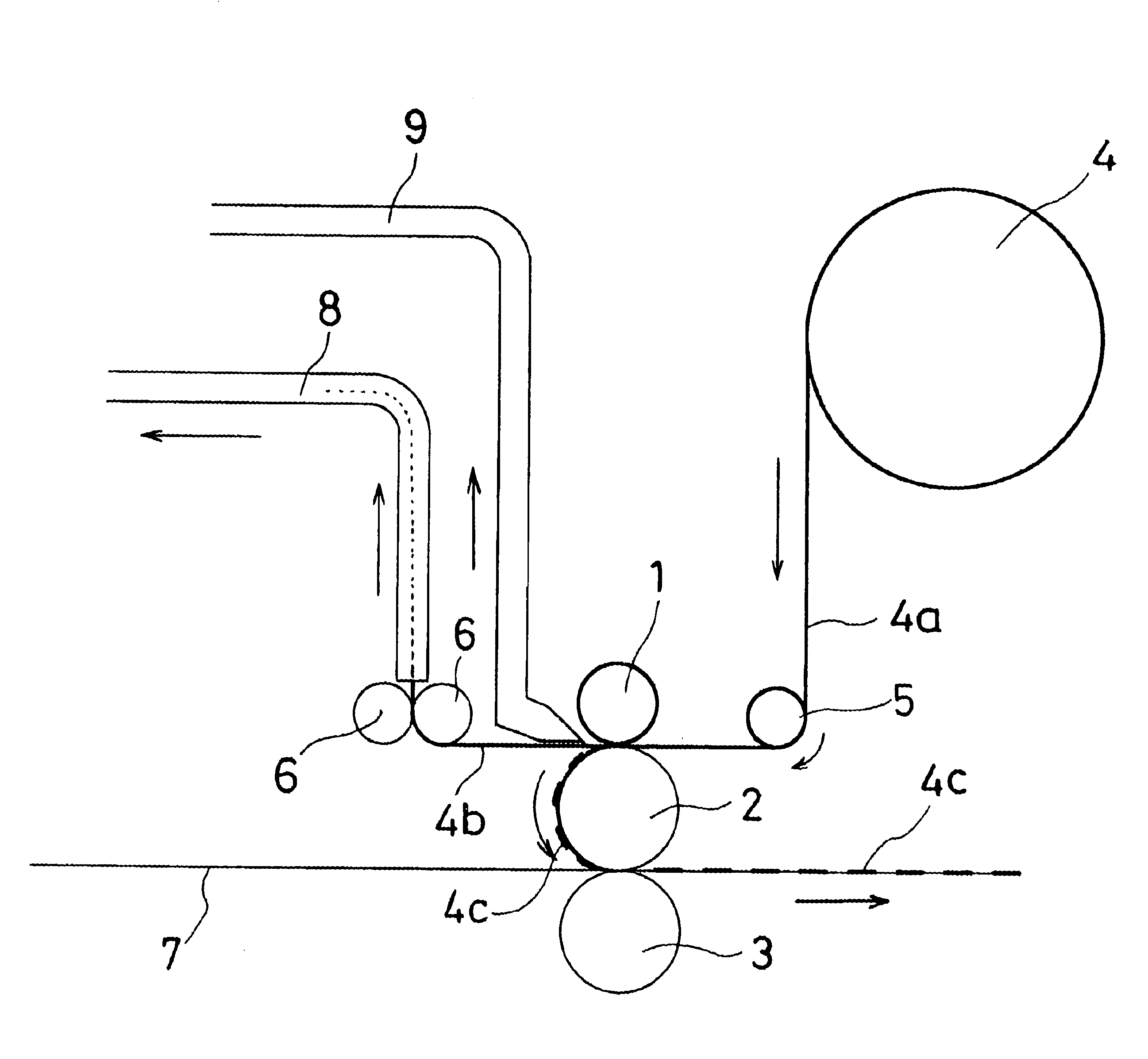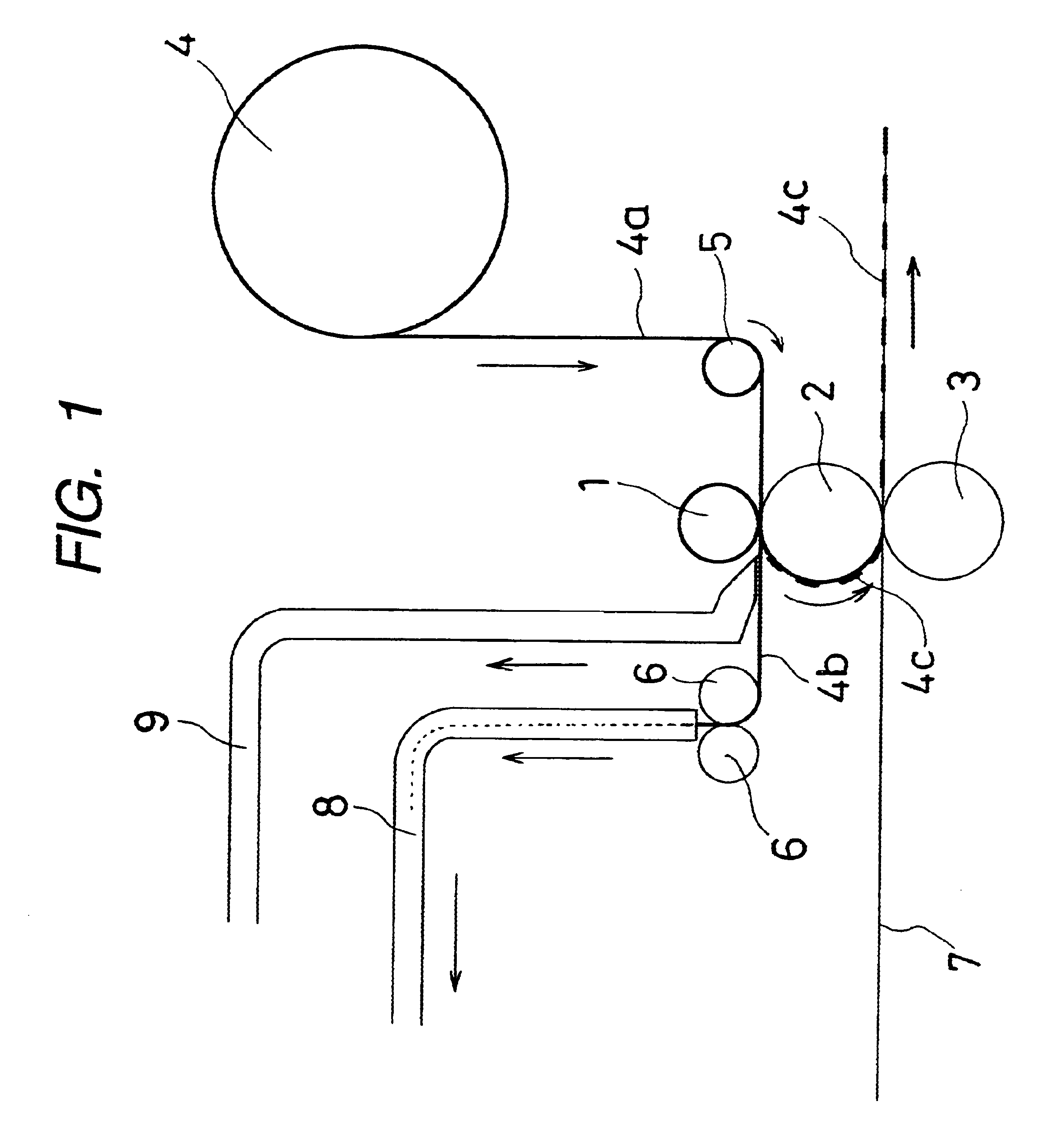Process for producing resonant tag
a technology of resonant tags and die stamping, which is applied in the direction of magnets, printed circuit assembling, magnetic bodies, etc., can solve the problems of metal foil and carrier sheets having to be separated with difficulty, and the die stamping is not so advantageous in other cases
- Summary
- Abstract
- Description
- Claims
- Application Information
AI Technical Summary
Benefits of technology
Problems solved by technology
Method used
Image
Examples
Embodiment Construction
Under the above-mentioned conditions, the resonant tag of the present invention (Example) and the conventional resonant tag were manufactured and the performances of the manufactured resonant tags were compared.
The resonant tag of the Example is a resonant tag of the both-face coil type as shown in FIG. 4D. The Comparative Example is a resonant tag in one-face coil type as shown in FIG. 7.
The constitutions and properties are shown in Table 1.
As shown in Table 1, the resonant tag of the present invention has the similar resonant strength to that of the conventional resonant tag in spite that the number of winding coil is less.
FIG. 6 is an exploded perspective view showing the constitution of the other Example of the resonant tag according to the present invention. The coil-shaped metal foils 4C.sub.1, 4C.sub.2 which are stamped out by the method of the present invention are adhered to the both faces of a dielectric sheet 53 and then, they are adhered to a base sheet 71.
In the constit...
PUM
| Property | Measurement | Unit |
|---|---|---|
| resonant frequency | aaaaa | aaaaa |
| width | aaaaa | aaaaa |
| thermal adhesion | aaaaa | aaaaa |
Abstract
Description
Claims
Application Information
 Login to View More
Login to View More - R&D
- Intellectual Property
- Life Sciences
- Materials
- Tech Scout
- Unparalleled Data Quality
- Higher Quality Content
- 60% Fewer Hallucinations
Browse by: Latest US Patents, China's latest patents, Technical Efficacy Thesaurus, Application Domain, Technology Topic, Popular Technical Reports.
© 2025 PatSnap. All rights reserved.Legal|Privacy policy|Modern Slavery Act Transparency Statement|Sitemap|About US| Contact US: help@patsnap.com



